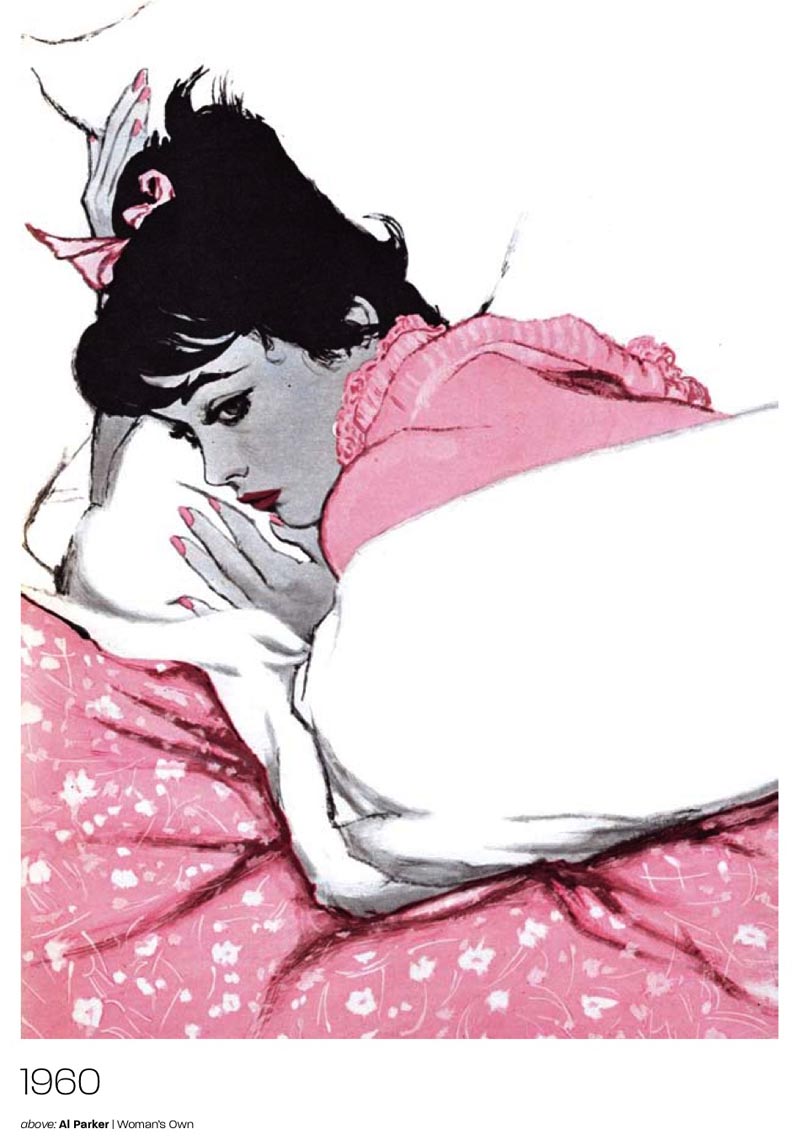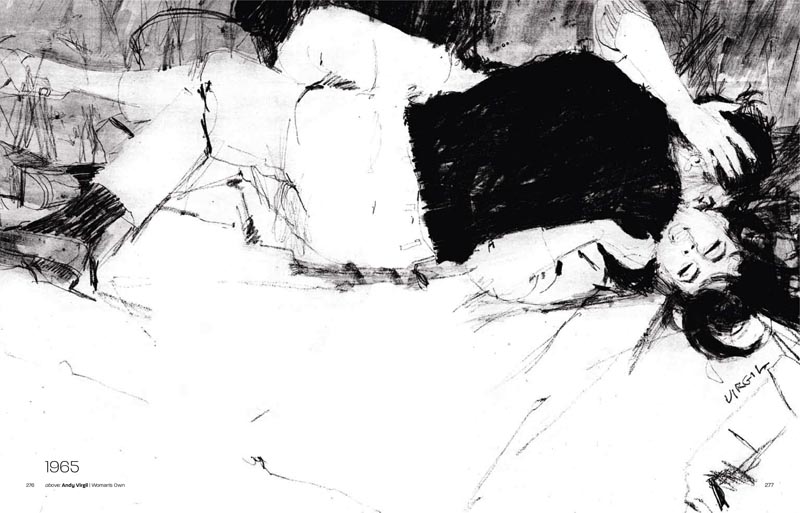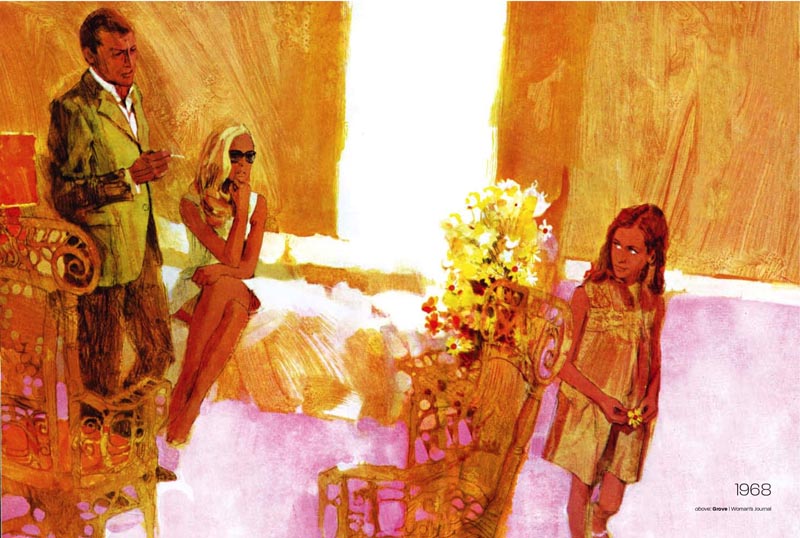* David continues his description of the fabulous new book, Lifestyle Ilustrations of the '60s, just released in the UK and Europe by the new publishing house Fiell and edited by Rian Hughes

Many of the best illustrations in British Womens magazines were American (and indeed, around half of the artwork in the collection is by American artists). Often these were reprints of works originally created for Cosmopolitan, McCalls or Good Housekeeping (sold as second rights only) but in many cases these were created specifically for the UK. The book charts the evolution of the American involvement in the UK and presents a slightly different picture of the true greats of the era.

The dominant artists, particularly in the early part of the decade are names that will be very familiar to regular readers of TI: Bernie Fuchs, Joe Bowler, Coby Whitmore, Joe DeMers and Al Parker.

The British art editors were well aware of how talented they were and used their pictures in great numbers. In turn the British artists were clearly inspired to up their game and try to compete with their transatlantic rivals. Perhaps not surprisingly some were resentful of the unwanted competition but there’s no doubt that exposure to American innovations was a major factor in the best of the Brits transforming their approach to illustration.

But as the '60s progressed a new group of American artists began to assert themselves and looking over the decade as a whole it is not Fuchs, Bowler or Whitmore who are the dominant artists, it is instead Andy Virgil (below), Lynn Buckham, Herb Tauss, Bill Whittingham and Ben Wohlberg.

Had the American market not collapsed these would have been the next generation of stars competing with the more established names but as things turned out they had to look further afield for work- and it was Britain who was buying. You can read about Andy Virgil's struggles as an artist on his wife Anita’s poignant and moving blog on this very site ( just click on the link to the right ) but the others remain obscure figures even now.

You won’t find listings for Virgil, Buckham or Wittingham in Walt Reed's Illustrator In America book but they were artistic giants. Buckham (above) is by far the most prolific artist in Lifestyle Illustrators Of The '60s ( with over 60 paintings included in the book ) and one of the reasons for this, along with his obvious talents as an artist is that he took the drastic step of actually moving to the UK, as did Herb Tauss and David Grove (below).

They went where the work was, but an unwanted side effect of this was to make them less appreciated in their homeland than they should be.
Continued tomorrow...
* Lifestyle Illustrations of the '60s is available at Amazon.com
This series of posts is neat-o; I ordered a copy of the book. The palettes are intersting, huh?
ReplyDeleteThank you so much for sharing this. As a life long student of the classic illustrators, I hadn't thought of those illustrators who were emerging when it all went to photography. These artists really did take what their predecessors did and improve on it.
ReplyDeleteThe colors are gorgeous
ReplyDeleteActually Bill Whittingham was listed in the first and second addition of Walt Reed's, 'The Illustrator in America'.
ReplyDeleteFuchs, English and Peak were dominant artists through the 60s', and remained very busy and in the public eye, in spite of the top magazines fading out in America, and while the other American illustrators were emerging in the the British magazines. As I remember, Fuchs was still considered the top illustrator, who most other illustrators admired and were influenced by the most, even well after the 60s'.
Looking at Tauss, Buckham, Whittingham and Wohlberg's technique reminded me of Fuchs's late 50s' and early 60s' style, but Fuchs kept changing, while most of these illustrators were still working with what Fuchs had started earlier.
As Robert Heindel, a good friend of Fuchs wrote, "Bernie's brilliance was that he could take the same assignment that everyone else got, and do something special with it."
Regardless, I think they were all accomplished illustrators, and fit in well with the British magazines.
Tom Watson
Such beautiful colors!
ReplyDelete